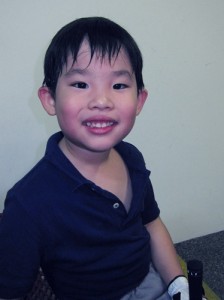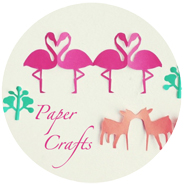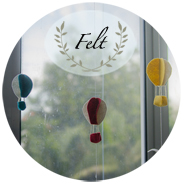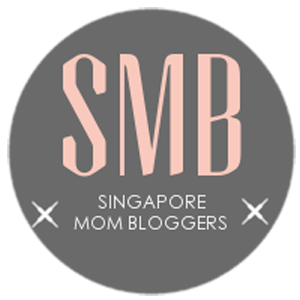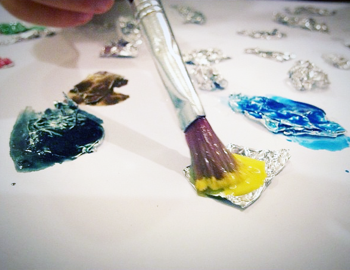
Out of curiosity, I walked into an art school with K on Saturday.
I never really had the intention of signing K up for an art lesson, it was just an attempt to see if the art classes offered from this school was worth sending a child to. The trial was after all free, so the cheap mom in me grabbed the opportunity for K to experience a short session and to evaluate the programme.
The boy was very enthusiastic and gamed to attend the trial, since he tend to enjoy doing those paint art craft activities in those malls, and thought that this was something similar.
Before K entered the class, I asked the lady at the counter area a whole host of questions;
Me : Can I know how are the lessons conducted?
Lady : We will show you the final product after the class so that you can decide if the programme is suitable for your child.
Me : Arhh.. isn’t art more about the process and not the product?
(After reading those early childhood art development books from Susan Striker and attempting many art activities with K from some of Mary Ann Kohl books. Hearing this words from her sounded the alarm bells in my head, especially when I am so influenced by these authors that art is ‘the process and not the product that matters’, when it comes to teaching art to young children).
Lady : (she looked quizzically at my comment)
Me : Oh ok, what I meant was, what is the structure of the lesson like? What are the children taught and how does the teacher teach them?
Lady : Oh 30 minutes, we will let the children do free hand drawing. Then the next 30 minutes of the class the child will do this activity.
The lady behind the counter showed me a A4 printer paper that was divided into half, the top part of the paper showed a black-line drawing of an apple, and the bottom half was blank.
Lady : The child will be asked to draw this apple, and use oil pastels to color the picture. Afterwards, the teacher will guide the child to teach some techniques of blending, just like these pictures you see on the wall. (She pointed to the colored creations pasted on the studio’s wall that were done by the other students)
Me : So what exactly does a child learn in foundation class, and then after that, what do they learn when they progress to the higher levels?
Lady : Foundation course is for kids between 4-6, where they will do tracing, follow the dotted lines in the picture, and then color in the picture with the blending methods that the teacher will teach. Then after that, when the teacher thinks that the child is ready, we will move the child to Level 1. They will learn composition, layering, and the gradation of colors. See this picture (she pointed to another set of pictures, with a consistent Orange in the middle of the picture, and the rest of the pictures was filled with the children’s own drawings). These pictures are from Level 1 and 2, the child will be given a picture with a line drawing of a orange, while the rest of the picture is blank. The child can fill in the picture with their own drawings and then blend the colors on the picture.
Right after 45 minutes, Kyle emerged from the class, and the lady behind the counter showed me his ‘product’ from the class. I was not able to show the picture on this blog (they are probably afraid of people like me, who will do this…heh). And what I saw was a nicely blended picture (right to left – dark red to lighter red, in 3 gradated shades) of the apple on top, and Kyle’s self-drawn and colored purple apple at the bottom of the paper.
Well, I squirmed myself out of not signing up for the classes, by telling the lady behind the counter that I am still evaluating which art school to send Kyle to.
I think if a child attends the class, they might eventually reach this stage of being able to blend an apple, or any other thing very nicely.
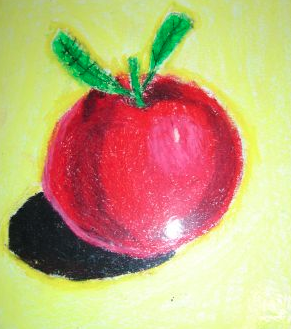
Just a random picture of an oil pastel blended apple from google
I told hb that the experience was quite a disappointment, and his remarks were, “It is only $35.00 per class, what do you expect? Blending is after all still an art technique to teach the young ones. This is a supervised activity of sorts for the young children, you can’t expect the teacher to be passing down the technical details of art in that 30 minutes per lesson to the child. I hope you are not expecting that the teachers are art graduates or NAFA trained? Art is like how it has been in ancient times, children go under the tutelage of famous artists, who all then hand down their expertise. Teaching art needs a lot more time and effort on the part of the teacher.
I did not quite agree with the part about being an artist to teach a child art. I am not an artist, but I think using the right techniques + with the help of books, guiding K over time to build his creativity and interest for art is possible. I have after all taught myself to sew and to craft, and I think that can be considered another kind of art form.
So, I walked straight to the bookshop right after K’s trial session, to buy a box of 50 oil pastels for K.
Next up, art lessons home-learning style!
See this youtube video for quick tips on blending with oil pastels
See this previous post on picture books about art and creativity.
And here is a great article from Sarah of The Playful Parents on introducing the concept of geometric shapes in art, as shape is a foundational concept in teaching a child art.


